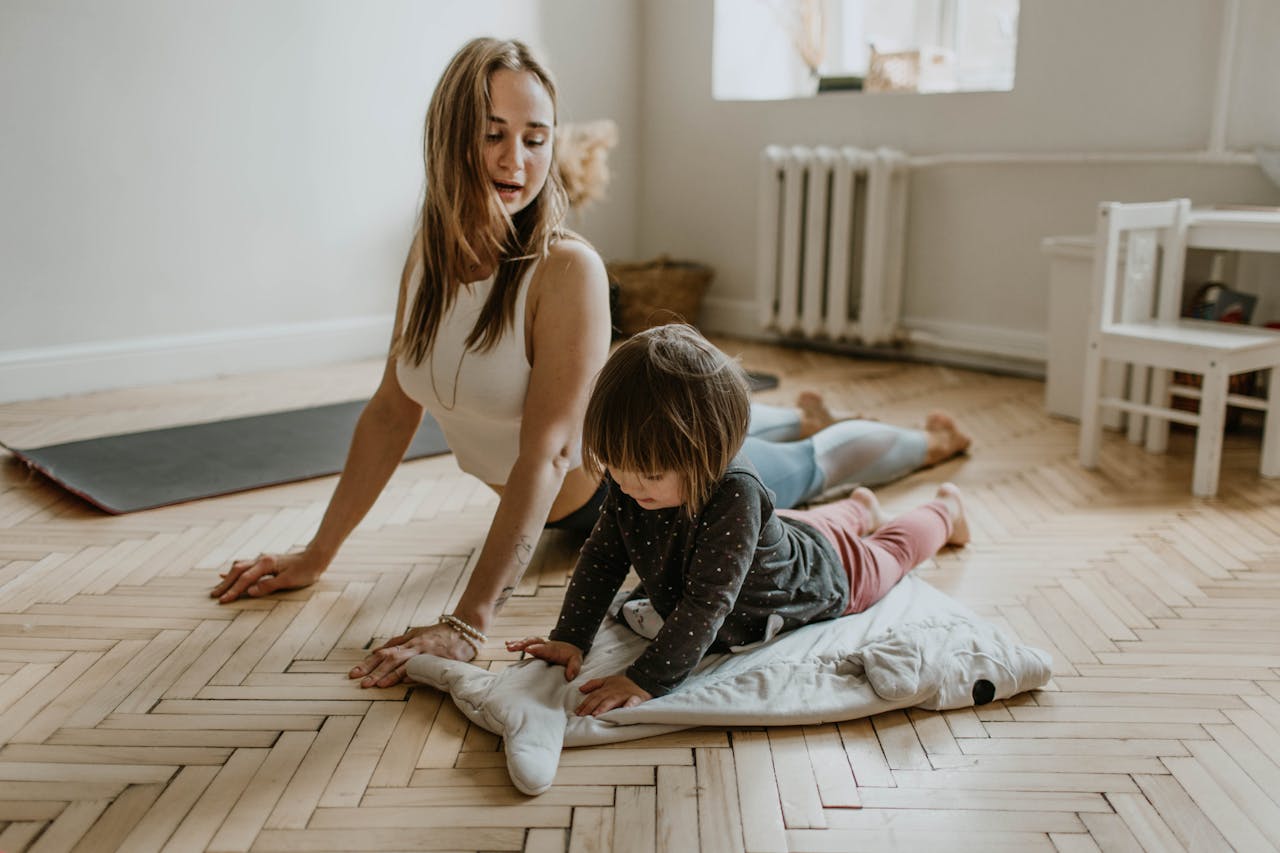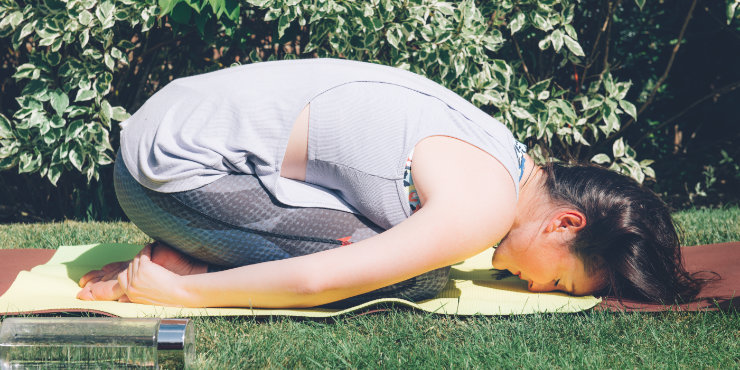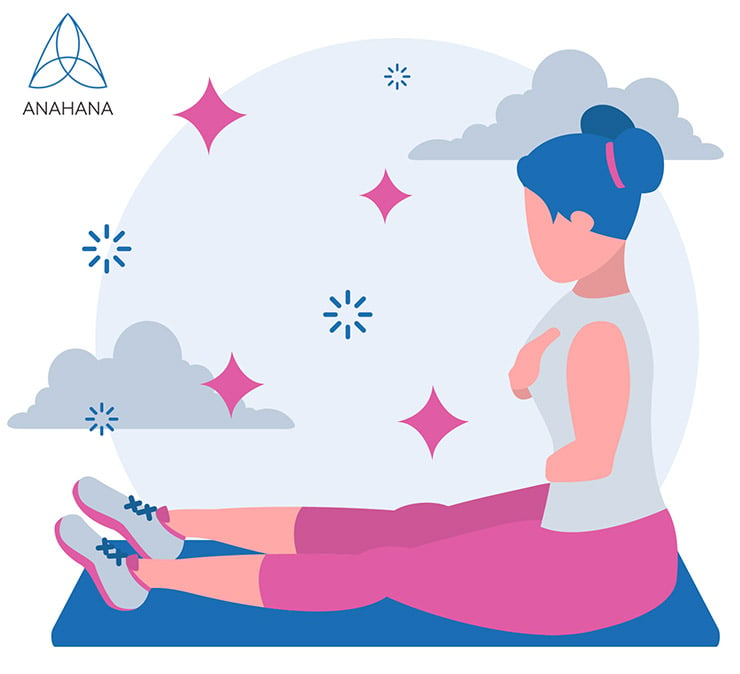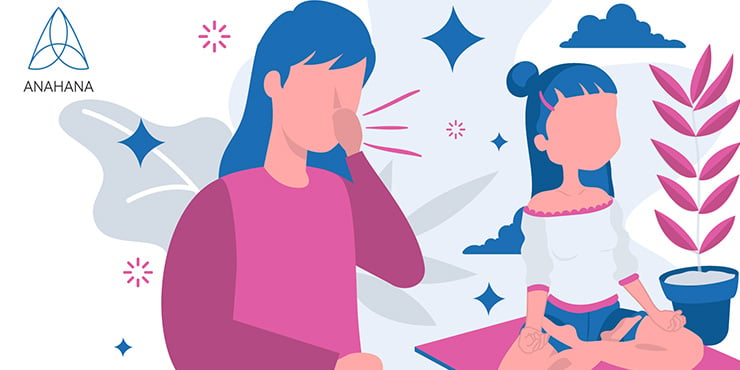
Table of Contents
Yoga teaches relaxation, health, and inner fulfillment techniques for children of all ages. It also encourages self-esteem and body awareness to increase a child’s overall well-being. It is becoming more common in schools in various parts of the world. Many parents use it to help their pre-adolescents in many areas.
How Yoga For Kids Can Help
Benefits Of Yoga For Children
There are many benefits of yoga for kids, making it an ideal activity. Asanas can help with flexibility, increase balance and coordination, and develop focus and concentration. In addition, it boosts self-esteem and confidence and strengthens the mind's connection to the body.
-
Enhances flexibility: Yoga teaches kids to exercise and engage all muscles in new ways while incorporating gentle stretches. All yoga postures work on challenging different muscle groups, which helps to increase children's awareness of their bodies.
-
Increases balance and coordination: Many yoga poses rely on balance and coordination, which improve mental clarity and physical stability. Even if a child struggles to get the hang of a new position, they can find psychological and physical balance.
-
Helps develop focus and concentration: Focusing on balancing and mastering certain yoga poses can assist children in learning mindfulness and encouraging them to clear their minds. This is proven to benefit their focus in school and help them pay attention in class, thus improving their grades.
-
Boosts self-esteem and confidence: Yoga instills confidence in children by teaching them to persevere, be patient, and work toward their goals. When a child masters a new pose, they experience fulfillment and satisfaction. This impacts school, relationships, and extracurricular activities, as they become progressively more mindful. Yoga also provides children with the tools to be more compassionate and generous.
-
Strengthens mind-body connection: Kids can achieve a stronger mind-body connection by exercising the physical body and calming the mental spirit. Children who practice yoga are seen to be more mindful, compassionate, happy, brave, and peaceful. This is because yoga releases feelings of pressure and stress, nurturing children to be more resilient and resourceful of the mind, body, and spirit.
General Risks
There are physical risks to yoga for kids as their bodies are still developing. Because of this, it is essential to avoid injuries, including falls and muscle strains. They should begin slowly with the most basic poses and sequences to not surpass their flexibility and strength capacities.
However, even poses that children have mastered can still be dangerous as many of them place stress on the neck and spine. Children must not push themselves too hard to avoid injuring their immature musculature. Teachers, parents, and child practitioners should not force them beyond their abilities and make sure that they feel comfortable during all stages of yoga. Physical risks can usually be avoided by approaching yoga practice mindfully rather than competitively.
Some parents are hesitant to enroll their children in yoga classes. Many believe that yoga practice might have religious associations, including prayer, and that yoga is a version of Hinduism. This is due to spiritual words, including om and namaste. Moreover, some believe that certain poses are a form of Hindu worship. Most yoga teachers avoid Sanskrit names by using more generic words, including cat, bridge, table, tree, etc.
Yoga Poses For Kids
If you’re curious about what it takes to start yoga, allow us to introduce you to some simple practices that will help (1) enhance your breathing, (2) balance, and (3) stress reduction through relaxation:
 Child's pose (Balasana): The child's pose is a highly appropriate restorative yoga posture for children. To begin, kneel on the ground and touch your big toes together. Sit on your heels and open your knees so they are hip-width apart. Slowly bring your head down and rest it on the floor in front of you. Lastly, lengthen and extend your arms in front and take deep breaths. This helps kids reduce overwhelming external sensory and focus on themselves.
Child's pose (Balasana): The child's pose is a highly appropriate restorative yoga posture for children. To begin, kneel on the ground and touch your big toes together. Sit on your heels and open your knees so they are hip-width apart. Slowly bring your head down and rest it on the floor in front of you. Lastly, lengthen and extend your arms in front and take deep breaths. This helps kids reduce overwhelming external sensory and focus on themselves.
-
Benefits: A child's pose can help children manage big and overwhelming feelings by putting them into a calm state, relieving emotional tension in the body. This can also help children fall asleep at bedtime. In addition, it stretches out the legs and reduces tightness in the neck and back.
-
Risks: Balasana should not be performed if a child experiences diarrhea or a knee injury, as it can worsen the conditions.
Tree Pose (Vrikshasana): In this standing balance pose, you rest one foot against the opposite leg's inner thigh. Start in a standing position. Shift your weight to one foot. Lift the other foot and place it against the inner thigh of your standing leg. For an extra challenge, reach your arms up over your head and try to touch your palms together. Try holding for five long breaths. Then switch sides.
Warrior 3 (virabhadrasana): This is another standing balance pose that can be used to strengthen the back of your spine and legs. While standing, shift weight to one leg. Bend your hips forwards and lift the other leg straight back behind you. Keep both knees straight and reach your arms back. Try holding for five long breaths, and remember to do the other side.
Standing Forward Bend (Uttanasana): This pose could be thought of as touching your toes. From a standing position, bend forwards, keeping your knees straight. You can rest your hands on your legs or on the floor. Try lifting your sitting bones to deepen the forward bend.
Bow pose (Dhanurasana): This is a fun and interactive posture that many children find exciting to try. Begin this pose by lying on your stomach. Bend your knees, and grab your ankles. From here, lift your body and keep your gaze straight ahead. This pose should be held for four or five breaths.
-
Benefits: The bow pose stretches and strengthens the back, shoulders, chest, and legs. It adds flexibility and functionality to hip flexors and regulates the digestive system.
-
Risks: The bow pose involves a lot of stretching, and children mustn't push themselves too far. You can help the child grab their ankles and lift to ensure that they are not pushing themselves too hard and conduct the pose with safety and precaution.
 Belly breathing (adham pranayama): Belly breathing, also known as diaphragmatic breathing, is an excellent way for children to practice mindfulness. They can do breathing by laying down on their back and placing their hands or a small stuffed animal on their belly. From here, they can watch the toy rise and fall as they take deep and controlled breaths through their nose.
Belly breathing (adham pranayama): Belly breathing, also known as diaphragmatic breathing, is an excellent way for children to practice mindfulness. They can do breathing by laying down on their back and placing their hands or a small stuffed animal on their belly. From here, they can watch the toy rise and fall as they take deep and controlled breaths through their nose.
-
Benefits: Belly breathing helps children find awareness of their breath and learn how it controls their body. Taking these deep and controlled breaths can decrease a child's heart rate, calming the nervous system. This teaches children skills of relaxation and self-control.
-
Risks: Children with asthma or other respiratory conditions should be careful while practicing belly breathing. It may cause labored breathing and increasing fatigue. Adolescents will need to practice it gradually to see the benefits.
Frequently Asked Questions
Is yoga good for kids?
Yoga is highly beneficial for children. Because they are still in the development stage, they are generally quick learners, and incorporating a yoga practice into their daily routine can help them live a healthy lifestyle. Younger people are often overstimulated in the digital age, harming their attention span and concentration level.
In addition, unhealthy eating habits are becoming more common in children, causing an increase in child obesity. Yoga for kids is one of the best activities to fight against the many problems and health concerns children face in today’s society. Yoga is not just an activity but a lifestyle, and the benefits of exercise, meditation, and nutritional eating can support a child in healthy development.
Notably, pre-adolescents with special needs, including autism and ADHD, can gain much from yoga, as it reduces stress and helps them focus and participate socially in their classes.
Which yoga is best for children?
There is no single yoga that is best for children. It varies greatly depending on what you are looking for your child to get out of it. It will help if you examine your child’s age, physical shape, and experience so that you can choose the most appropriate and engaging yoga. Some forms that may be appropriate for a child under the age of twelve include, but are not limited to:
-
Hatha yoga: Hatha yoga often consists of standing and sitting asanas that focus on stretching and breathing. It is believed to be the best yoga for beginners due to its slow pace and can be done by children over four.
-
Isha yoga for children: Isha yoga introduces yoga to children in its simplest form. It uses fun, love, and joy to support children’s development and help them achieve health, peace, and happiness. It celebrates natural gifts within every child and can be started at four or older.
-
Yin yoga: Yin yoga focuses on slow movement that stretches deep connective tissue and increases flexibility. It is simple enough for most children over the age of four.
-
Nada yoga: Also known as “the yoga of using sounds,” nada yoga is one of the best ways young children can begin yoga by focusing on meditation and relaxation. It supports mind and body development and increases confidence and self-esteem. Nada yoga can be started at an early age.
-
Restorative yoga: Restorative yoga is a slow, meditative form of yoga that utilizes props to support the body while holding poses for extended periods. This is the best form of yoga for parents who want their children to access feelings of relaxation and contentment. It is recommended for children with some previous yoga experience, possibly above age eight.
-
Vinyasa yoga: Vinyasa yoga involves matching breathing with a series of movements that flow together to create a quick and fluid routine. It is often done to music with beats matching the sequence, making it high energy and fun to participate in. Vinyasa yoga varies in difficulty and is recommended for older children older than twelve with previous yoga experience.
At what age should children start yoga?
There is no one answer to this question since every child is different. However, many experts believe that children as young as 3 or 4 years old can benefit from yoga, as long as the practice is tailored to their individual needs and abilities.
If you are thinking of introducing yoga to your child, it is important to consult with a qualified instructor who has experience teaching children. They will be able to adapt the practice to your child's individual needs and help them get the most out of their yoga experience.
In India, yoga for kids is taught at eight years of age because it represents the end of childhood. Although what classifies the end of childhood varies among different cultures, eight is recognized as physical and psychological development while children begin the transition into adulthood. Some of the evidence that supports beginning yoga at eight years old includes:
-
The number of air sacs in the lungs is stabilized by eight years old.
-
The health of the immune system is established by then.
-
Those who begin yoga at eight delay puberty, keeping them a child longer.
-
Spirituality development starts at this age.
Although traditionally done in India, this does not mean that you should wait to teach or enroll your child in yoga classes. There are various reasons people do yoga, and it is beneficial for a person even as young as three to practice mindfulness.
How do I start my child in yoga?
All parents want to do what they can for their children to be happy and healthy. Yoga assists them in developing a skill set that helps build their character and the ability to make good decisions.
As a parent, you don't want to force anything on your child, but you want to guide them toward activities and practices that support their growth and development. There are several ways you can get your kids started. First, you might want to enroll your child in a weekly kids yoga class. If this doesn't work for your family's schedule, you can bring yoga into your home life.
Turn your living room into a space to teach yoga and invite your child to practice it as a family in a routine fashion. This will allow for family bonding while supporting health, happiness, and spiritual development. When teaching yoga to your children, use simple language that they understand.
This will help them relate to their own life experiences and develop a bond with yoga. Make sure to make it fun and interactive to keep your kids engaged. In addition, try using an incentive such as video or playtime to keep them interested and engaged. Teach your kids breathing exercises and techniques associated with yoga that they can carry with them throughout their day-to-day lives to learn stress management.
If you have older kids developing into pre-teens, you may also try free classes on youtube. To avoid the interruptions of advertisements, you may prefer to purchase yoga videos from another website. However, younger kids and toddlers are more likely to be interested in interactive lessons. Growing with your child as a family can help support their accomplishments and inspire their involvement.
References
Executive function in children: Why it matters and how to help - Harvard Health
Benefits of Belly Breathing for Kids - Balancing Elephants.
Yoga Poses for Kids: Child's Pose | How-to Yoga Poses for Children – Flow and Grow Kids Yoga.
Yoga Benefits & Easy to do Poses for Children
Disclaimer
The contents of this article are provided for informational purposes only and are not intended to substitute for professional medical advice, diagnosis, or treatment. It is always recommended to consult with a qualified healthcare provider before making any health-related changes or if you have any questions or concerns about your health. Anahana is not liable for any errors, omissions, or consequences that may occur from using the information provided.

By: Anahana
The Anahana team of researchers, writers, topic experts, and computer scientists come together worldwide to create educational and practical wellbeing articles, courses, and technology. Experienced professionals in mental and physical health, meditation, yoga, pilates, and many other fields collaborate to make complex topics easy to understand. Anahana is also home to specialists in crystals, tarot, angel numbers, astrology, life path numbers, zodiac signs, and horoscopes. By combining evidence-based wellness with spiritual and energetic practices, the team offers clear, trustworthy guidance for both mind-body health and modern spirituality.
